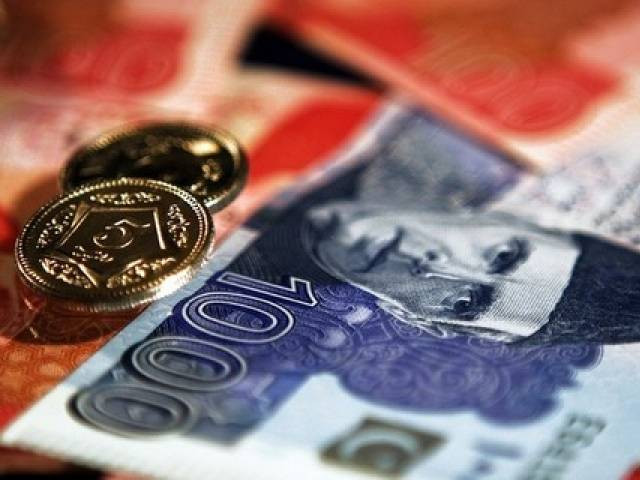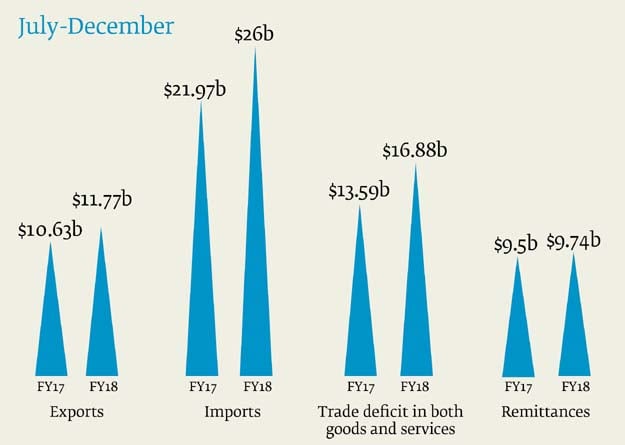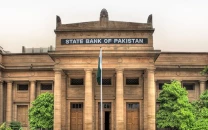Pakistan’s current account deficit shrinks 21.5% in December
Amounts to $1.13 billion compared with $1.44 billion in November

Credit ratings agency says currency is still likely to come under pressure as current account deficit widens. PHOTO: BLOOMBERG
The contraction still means that the country’s current account deficit widened 59% in the cumulative six-month period (July-December) of the current fiscal year 2017-18 (FY18), amounting to $7.41 billion compared with $4.66 billion in the same period of the previous year, according to data released by the State Bank of Pakistan (SBP) on Friday.
With the difference between exports and imports being the biggest determinant of the current account balance, a deficit or surplus reflects whether a country is a net borrower or net lender with respect to the rest of the world.
Jul-Oct FY18: Current account deficit widens 122%, stands at $5.01 billion
Investors have shown concerns about the growing deficit after the country recorded a much higher-than-expected deficit of $12.4 billion (4% of gross domestic product - GDP) in the previous fiscal year that ended on June 2017. The deficit in FY16 was just $4.86 billion.
To control the gap in imports and exports, the government in October enhanced regulatory duties by up to 350% on 356 essential and luxury goods that is expected to dent the rising import bill in coming months.
In December, as per the anticipation of market observers, the government let the rupee lose over 5% of its value against the dollar.
The move is expected to discourage unnecessary imports while supporting exports in the coming months.

Up until now, the government was reluctant to let the rupee lose its value against the dollar.
Former finance minister Ishaq Dar was the biggest proponent of a stronger rupee for over four years, which analysts say significantly hurt the export sector of the country.
As a percentage of GDP, the deficit rose to 4.4% in the first six months of FY18 as opposed to 3.1% in the same period of the previous year.
In Jul-Dec FY18, Pakistan exported goods worth $11.77 billion compared with exports valuing at $10.63 billion in the same period of last year, reflecting a year-on-year increase of 11%.
However, imports jumped much faster to $26 billion against $21.97 billion last year, up 18.34%.
The balance of trade in both goods and services in the first six months was negative at $16.88 billion compared with $13.59 billion in the same period of the previous year.
Trade deficit jumps 30% in 1QFY18
Workers’ remittances amounted to $9.74 billion in Jul-Dec FY18, up 2.52% from the corresponding period of previous year, when they totalled $9.5 billion. Remittances make up almost half of the import bill of Pakistan and cover the deficit in the trade of goods account.
Pakistan is also facing low levels of foreign direct investment (FDI). In fiscal year ended June 30, 2017, FDI increased just 5% to $2.41 billion compared to $2.30 billion in the previous year.
Published in The Express Tribune, January 20th, 2018.
Like Business on Facebook, follow @TribuneBiz on Twitter to stay informed and join in the conversation.



















COMMENTS
Comments are moderated and generally will be posted if they are on-topic and not abusive.
For more information, please see our Comments FAQ